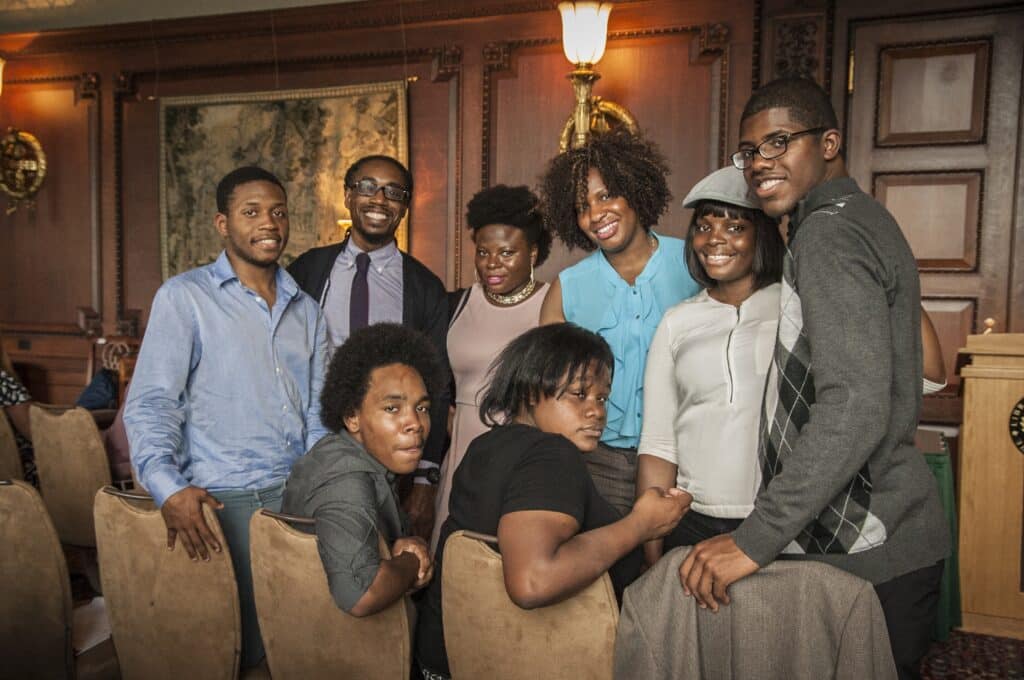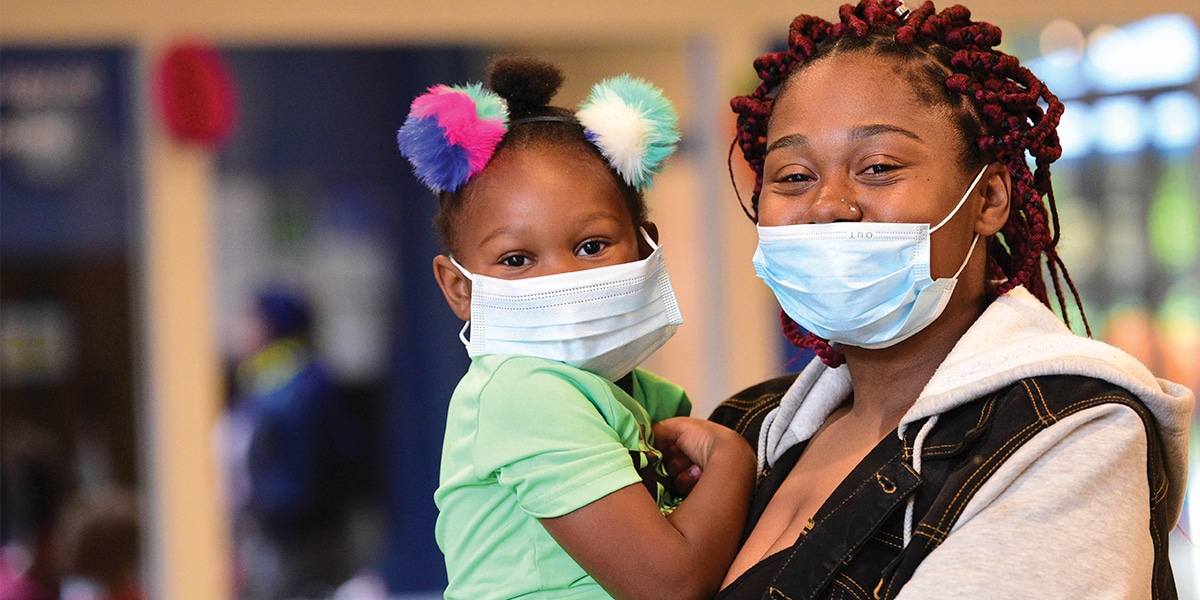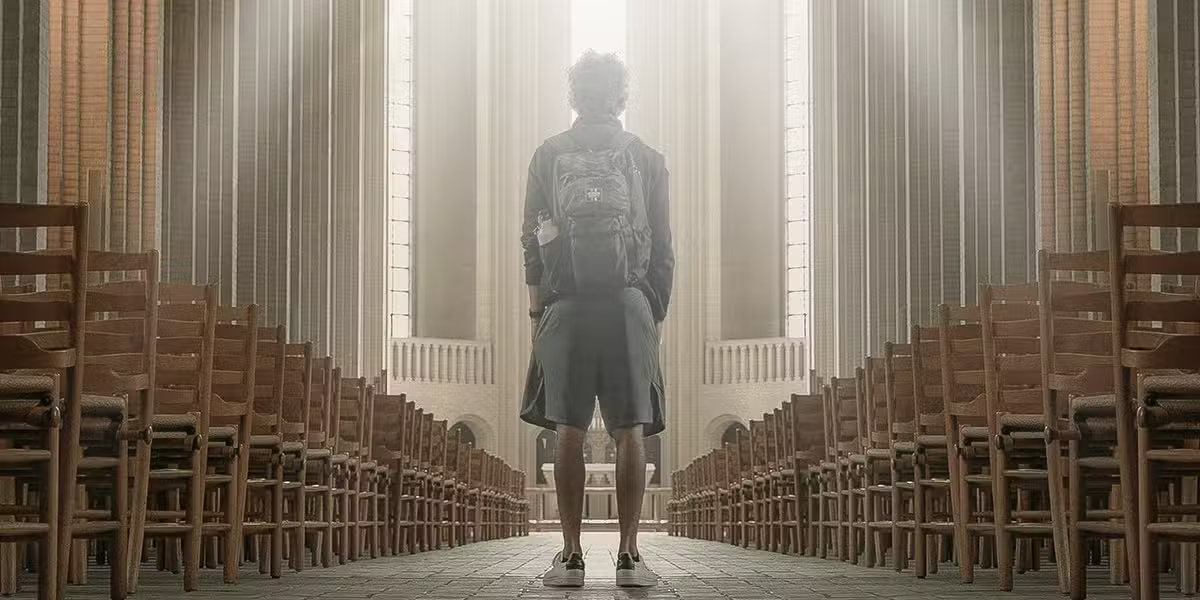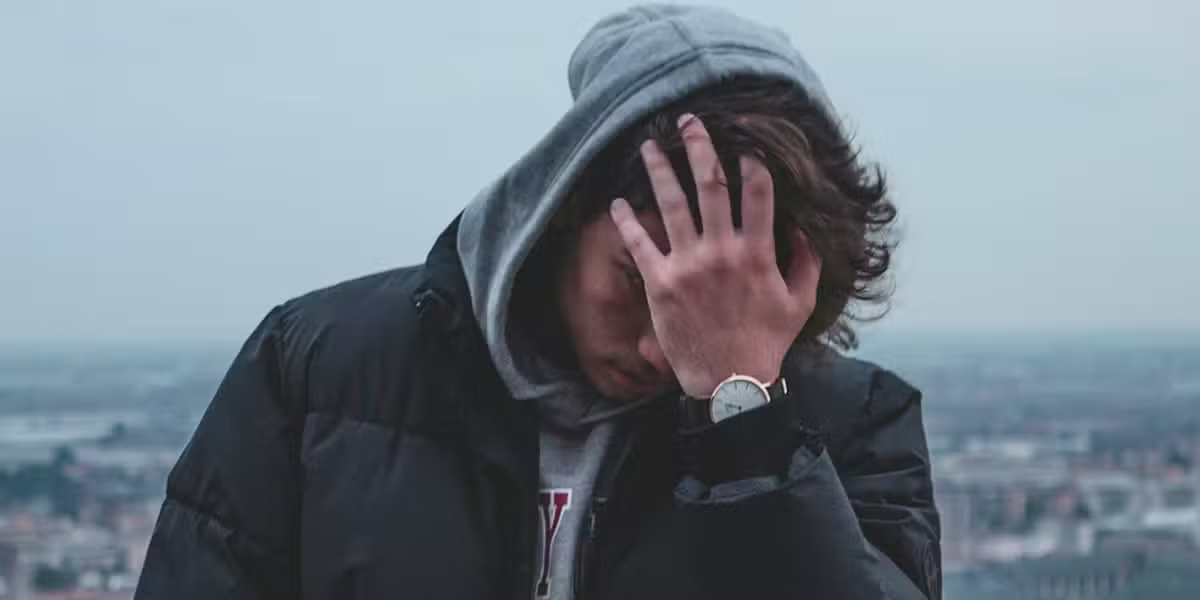Housed in a nondescript building in the shadow of gleaming skyscrapers and high-end boutiques in Manhattan, Covenant House is a place of refuge and hope for teens and young adults left behind.
The main center for Covenant House, the largest youth shelter in the world, is housed in a timeworn building in Midtown Manhattan. It’s hardly noticeable near the hubbub of the Port Authority, New York City’s bus station.
Nearby are the gleaming towers of the newly constructed Hudson Yards, a testimony to the city’s privilege, where the landscape is overwhelmed by shopping centers dedicated to boutiques of every stripe.
Covenant House began in 1972. It grew out of what was dubbed the Minnesota Strip, a garish neighborhood filled with porn palaces and prostitutes who brazenly promoted their trade. The Minnesota Strip was named for those kids, both boys and girls, who landed on the streets after arriving via bus from the Midwest and quickly falling into prostitution, their Gotham dreams turned into nightmares.
Covenant House offered respite, a place where street kids could get their acts together.
New York is now a different place, seemingly more benign while still bustling. Natives, instead of complaining about porn palaces, gripe about the onslaught of tourists who crowd the sidewalks around Broadway’s theaters. The area, like most of Manhattan, reeks of money and privilege in many places.
Notre Dame Sister Nancy Downing, executive director of Covenant House New York, agrees that the bad old days of the city’s brazen urban tawdriness are largely past. But that doesn’t mean young people are not still being exploited. She estimates that about a quarter of the young people who come to Covenant House are victims of the sex trade, now largely conducted in the shadows and via the Internet.
New York, she says, “has changed on a visual level. But we are still seeing young people being trafficked.” On this July day, the streets are steamy. And, in a city where newspaper tabloids still have influence, the newsstand headlines shout about a Manhattan billionaire, with friends in very high places, being charged with sex trafficking of minors.
“People know about it [trafficking], but they don’t say anything,” says Sister Nancy. In many ways, the issues remain similar beneath a different veneer.
There’s a quiet outrage in her voice. Injustice against children was a galvanizing force in Sister Nancy’s vocation. She used to work in the insurance industry but found herself drawn, as an attorney, to assisting troubled youth through legal tangles of foster care, immigration, and other issues.
“I wanted to feel like I was making a difference in the world,” she says. Sister Nancy, now in her late 50s, described her calling as a late one, forged in large part by her interest in helping troubled youth.
A Lifeline for the Forgotten
Covenant House, she emphasizes, offers more than an institutional cot and a hot meal. It is intended as a warm embrace, a religious commitment to the most desperate of young people. It offers a comprehensive approach, a chance for young people to find not only a place for the night but also a way out of their family issues.
The center features a health clinic, mental health facilities, counseling rooms, and a makeshift chapel. The aim is to enhance the physical, emotional, and spiritual health of a population often forgotten in today’s New York.
The approach is intended to help troubled youth navigate the difficult bridge to adulthood. That process can be difficult enough, even for those from prosperous and caring homes. But for children born to the twin plagues of poverty and abuse, the obstacles can seem daunting.
Jason, an 18-year-old Covenant House resident, is in many ways typical. But, like all residents, he has his own story. He’s from the borough of Queens and found himself threatened with homelessness after his landlord evicted him. He’s been at Covenant House for two weeks.
Jason is not without resources. He works as a mechanic at a huge box store in Queens and travels the subway every night to get there, starting work at 6 p.m. and not leaving until 6 a.m. His job involves 50–60 hours a week at $18 an hour, what might seem like a reasonable wage yet is hard to live on in New York’s rental market. He retains a modest demeanor.
“I don’t like asking anyone for anything,” he keeps repeating, seemingly emphasizing the point that his goal in life is not to be a burden on anyone. He is working on getting his high school equivalency.
But circumstances have not been kind to him. He notes that his mother and sister live in a homeless shelter in Queens, so even at his young age there is no real home to go to. He just got a $100 ticket for not paying for a subway ride. Now he’s discovered that Covenant House will provide residents with Metrocards, something he promises himself he will take advantage of.
Shakeema North, director of youth development and interfaith pastoral services for Covenant House, notes that the agency tries to fit in as much self-improvement and support as possible for the typical 60-day stay.
“Many are trying to make their own way,” she says. Much of her work is spent on one-on-one counseling sessions. Jason has been the recipient of an intensive process—it helps that he’s available during the day—which includes art, music, and life skills such as housekeeping and finances.
“We have to give them basic life skills,” says Sister Nancy. There is a kind of social work jargon ring to the phrase. But she quickly offers some perspective to those without a degree in social work. Many of the Covenant House kids never experienced the basics of a loving family life that many take for granted.
One young woman came to Covenant House and was offered a bed. She opted to sleep on the floor. The luxury of a bed was unknown to her. She was comfortable on the floor. “They are not used to having people take care of them,” Sister Nancy says of many of those who come to Covenant House’s doors.

A New Leader and a New Vision
Father Ritter began Covenant House, promoting its reputation as a haven for the scandal of a decadent Times Square, which continued to shock the city’s conscience. In stirring fundraising letters, he focused on vulnerable youngsters coming from out of town who fell prey to the city’s sex industry. He expanded the work of the agency to other US cities and overseas and would speak passionately in more affluent suburban parishes around the city, pointing out the horrors of sexual exploitation of young people just a railroad commute away.
But Father Ritter himself, while a master fundraiser and evangelist for the cause of troubled children, was a flawed figure. At a time when the topic of priest sex abuse was taboo, Father Ritter made headlines. He had been a crusader against child exploitation but was credibly accused of sexual misconduct and financial irregularities. Some thought Covenant House would not survive the human weakness of its founder exposed for the world to see. There were predictions that the agency would fold.
Father Ritter was dismissed by the Covenant House board and lived out his life in obscurity until his death in 1999. While Father Ritter needed to be jettisoned, the concept of Covenant House remained, and the board worked to salvage the operation.
A Daughter of Charity sister came to the rescue in 1990. Her name was Sister Mary Rose McGeady. The new director reworked the fundraising letters, making them closer to the reality of most Covenant House clients. They rarely came from the Midwest, and most were not white; they were largely young minorities from the city’s five boroughs, living through the chaos of crime and family dislocation created by the crack epidemic of the era.
The stories of kids being lured into the sex industries of the city after arriving at the Port Authority Bus Terminal were toned down, better reflecting the actual work of the agency. The more accurate approach worked. Covenant House was rebuilt on a more solid foundation.
Sister Mary Rose, who radiated both toughness and a concern for youth honed by years in social services, spearheaded the Covenant House comeback, leading the agency for 13 years. She died in 2012.
Fortunately, the crack epidemic abated. Now drug abuse is seen more as a widespread societal issue, not just an urban problem. But Covenant House in Manhattan continues to focus on troubled young people from the city, many of whom exist in the shadows, quietly remaining in all-night venues to deal with the reality of homelessness. About 85 percent of Covenant House clients are from the city, often finding the facility through on-street referrals from other young people in trouble. Or they are referred by police officers and outreach workers who locate the young people on the streets.
In a city that offers so much wealth, power, and opportunity, why do they remain homeless?
The reasons vary, Sister Nancy says. Some come from homes plagued by alcohol and drug abuse. Others are from families, cramped into small apartments with stratospheric rents, who no longer have room for them. Others come out as gay or transgender to their families and are kicked out as a result. Whatever the reason, through four floors of the Manhattan facility, 120 young people are sheltered each evening. Their time is limited to 60 days at the main shelter. A transitional housing facility run by the agency in the Bronx, New York, allows young people to stay for up to two years.
Sixty percent of funding comes from government agencies, the rest from private donations.
Changing Lives in 60 Days
Residents range from 16 to 21 years of age. (Those under 16, by law, can stay for only 72 hours.) Curfew is 9:30 every night, with the exception made for those who have night jobs. Wake-up time is 6 a.m.; breakfast is at 7. Residents then go off for schooling or jobs. The structure itself is a vital life skill for youngsters who often grow up with little guidance.
According to Sister Nancy, the faith dimension of Covenant House remains. No one is prosely-tized, and those who are served come from all faith backgrounds, or none. “We recognize God’s providence,” she says. The religious dimension is a quiet one, appreciated by many clients, she adds. The chapel is often a haven for troubled youth. Donations include rosaries, which are often clutched by young residents, even if they don’t understand or profess the prayers associated with the beads.
While New York is its birthplace and hub, Covenant House now extends across the globe. The agency tries to meet needs in other places as well.
Covenant House now has shelters in more than 30 locations, in large and small American cities from Anchorage, Alaska, to Grand Rapids, Michigan, to Asbury Park, New Jersey, as well as Houston, New Orleans, and Philadelphia. It has expanded internationally as well, with centers in Honduras, Guatemala, Nicaragua, and Canada. The New York model has been replicated in cities and towns both large and small, wherever young people find themselves on the streets instead of with concerned families.
Wherever they are, and wherever they come from, the young people who come to Covenant House are worth the effort, emphasizes Sister Nancy, who tries to educate potential supporters and benefactors about the hard world of young adult homelessness.
Youth homelessness remains an issue with serious misconceptions abounding, she says. One of the most common is that runaways can always go home. But, she says, they usually are not fleeing temporary family squabbles that can be easily patched up. It’s about more than normal family dysfunction.
“If they run away, they have run from abusive situations. They can’t go back. They have been told they are trash,” Sister Nancy says.
From these challenging backgrounds, she sees how the 60-day stays at Covenant House can have a long-term impact. Just a week ago, a young man, a new Covenant House resident, visited her office. He had told his adoptive parents he was gay. He was kicked out and began to feel that no one really cared about him. His talk with Sister Nancy offered a ray of hope.
“I am feeling a little better today,” he told her at a Covenant House barbeque the next day. She sees the young man as slowly working past anger and exploring the deep hurt of his life. These are the minor triumphs that make the work worthwhile.
Sometimes the stories make rags-to-riches sagas. Hannah had been living on her own since she was 13. She came to Covenant House at 18 and was the resident who preferred to sleep on the floor because she was not used to a bed. Hannah earned a 3.96 grade point average at Mount St. Vincent College, through a program sponsored by Covenant House. She is now in New Orleans, entering young adulthood, and working with the Covenant House facility there. She is determined to help those, like her, who are growing up without supportive families.
“She didn’t believe she would be alive at 21,” says Sister Nancy. Hannah is not the only one. Some former Covenant House residents have become doctors, lawyers, and musicians, and are truly gifted, waiting for an opportunity to shine.
Many others have been able to build stable lives for themselves as they navigate through adulthood.
Whatever the outcomes, Sister Nancy says the Covenant House youth represent a simple truth: “These are young people who have experienced homelessness. But homelessness is not what they are.”








